#loosely based on microraptor
Explore tagged Tumblr posts
Text

Courtship
Ectoberhaunt Day 2: Dinosaur
Close ups below the cut


Bonus because this is a fandom event and I should fit Danny in here somehow:

#dinosaurs#paleoart#ectoberhaunt24#danny phantom#ghost dinosaurs#um excuse me you aren't allowed to combine my special interests like this#I had other things to do this month you know#loosely based on microraptor#my art
29 notes
·
View notes
Photo
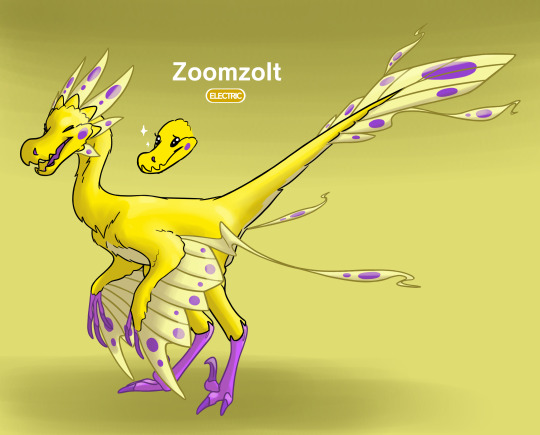
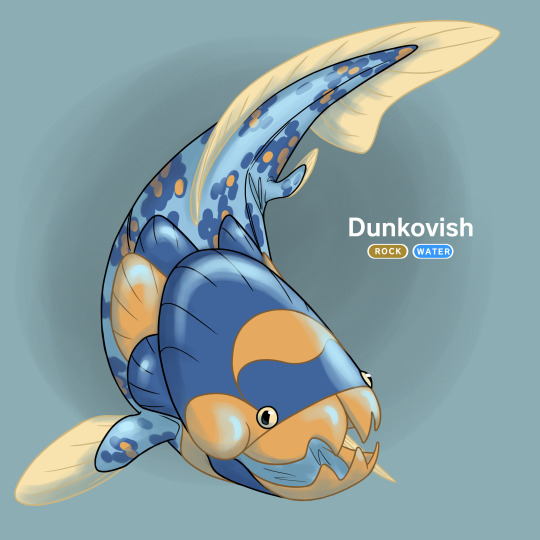
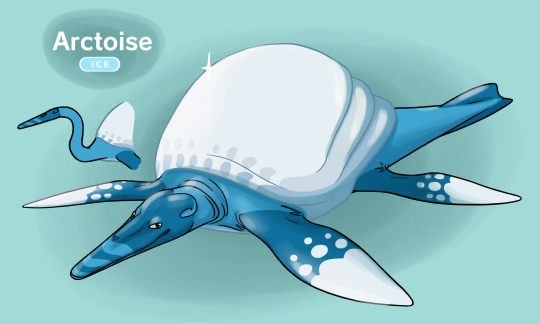

ok soooo... I’ve never played Pokemon or watched the show or anything, but my dear friend @cobwebbing got into SWSH a while back and infodumped a lot of interesting trivia onto me, including the thing about fossil combinations. we were both horrified by the implications, to the point that she wrote a fun fic exploring the concept (HIGHLY recommend it), and I got invested in speculating the ACTUAL original Pokemon (also, these designs are technically ‘canon’ to her fic)
I tried to mimic some of the official art in lining/shading, but I don’t think I stuck fully to the ‘cartoony’ vibe of Pokemon. ah well, good experience either way
for ease of reading, I’ll be slotting both the image descriptions AND the extra “Pokedex” info about these guys under the cut-- I thought a LOT about their behaviors lmao. for the image descriptions, please assume that the style of all pieces is a mix of ‘cartoony’ and realistic in form, with solid lines and base colors

+bonus! to see the belly <3
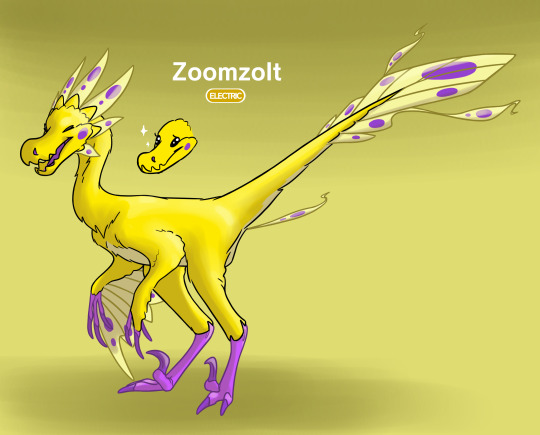
[IMAGE ID: text above the Pokemon reads “Zoomzolt” with a yellow button underneath reading “Electric”. the background is a dull yellow with some areas of shade.
this Pokemon is shaped like a prehistoric raptor, with a small/round horizontal torso, a thin neck curved upright, small arm-wings, lithe digitigrade hind legs, and a thin tail held stiffly out at an upward angle from the body. most of the body is bright yellow with small areas of purple, as will be described. the Pokemon is standing cheerily, facing to the left.
the head has a long snout with a prominent bump emphasizing the tip, where a small purple nostril sits on the visible side. the mouth is held open in a happy gape, showing a purple tongue. the front half of the upper and lower jaws have serrated edges resembling sharp teeth, which seem to interlock. the eyes are closed, the lines of the eyelashes turned up with the smile. a small doodle to the left of the head shows the head with jaw closed and eyes open, showing off glossy black-button eyes with tiny eyelashes, and sparkles floating around the eyes. the head is framed by a crown of large, decorative feathers, all of which are a lighter yellow than the body and sport a couple spots of purple. each cheek also has a single purple spot.
a pair of small arms are held loosely to the sides of the body, each with three bare-skin purple talons with long claws, peeking out from under the fluffy yellow feathers of the arm. each arm sports a set of primary feathers resembling a simple wing, ending at around the elbow. these primaries are a lighter yellow than the main body, with a couple spots of purple near the edges. the overall outline at the trailing edge of the primaries forms a lightning bolt shape. there’s a long decorative feather on each of the wings, close to the body, which extends out into a simple zig-zag, before ending in a rounded tip which resembles a peacock feather with a small wisp and a couple purple spots.
the bonus image removes the closest wing primaries, better showing the lighter-yellow underbelly, and the hind legs. the hind legs are long and lithe, covered in yellow feathers up until the ankle, below which the skin is bare and purple. each foot has three toes, two of which are based flat on the ground with mid-length claws. the third toe closest to the body is raised high, sporting a large, sickle-shaped claw, curved sharply compared to the other claws.
a fan of long, light-yellow feathers spans out from the tip of the tail, resembling both the wing feathers and the crown of feathers on the head, adorned with purple spots. the overall outline resembles a diamond, with a vague zig-zag formed by a few feathers on the sides. two long decorative feathers resembling those found on the wings sprout from the sides of the fan as well.
END ID]
Name: Zoomzolt
Type: Electric
Animal Inspirations: road-runners, cockatoos, microraptors in general
Extra design notes: since the spots on the cheeks canonically match the other fossil in the pair, that gave me free-rein to choose whatever color I felt like, and I eventually landed on purple. I also redesigned the arms/wings b/c the shape was just kinda awkward and dull? I think the new wing shape adds more flair to the design, especially in combination with the tail. btw I only thought of the partly-arboreal lifestyle halfway through the piece, and I didn’t feel like changing the claws to fit it better. just know I’m aware that the wing claws should be curvier, and the toe claws (sans sickle) shorter, lmao
Pokedex entry:
Zoomzolts are a highly social species, roaming the moors and forests in groups of 20 or more. while individuals aren’t particularly strong, their tight social bonds more than make up for the lack-- several Zoomzolts can combine their electric powers and deliver devastating blows to even the fiercest opponents. if this isn’t enough, Zoomzolts are a quick and agile species-- they can race away across the plains or climb up nearby trees before their opponent can recover. their unique feet provide an advantage here-- a marriage between an arboreal lifestyle with the curved sickle-claw for climbing, and a grounded lifestyle with the rest of the flat toes for stable running.
besides scaring off predators, Zoomzolts mainly use their electricity to attract and capture prey. at night, packs of Zoomzolts will gather in the upper foliage of tall trees, settle down, and allow small sparks of electricity to arc across their purple spots-- from one part of the body to another, and from one individual to another. this creates a dazzling light show that many nocturnal Bug Pokemon simply can’t resist. when these bugs venture close, the nearest Zoomzolt will quickly snatch them up before returning to formation.
Zoomzolts are friendly and curious to a fault, known for snooping among human belongings if left alone for too long. they’re very easy to train and bond well with humans, but a Zoomzolt will always need more of their own kind to truly thrive. at least 3 or 4 other Zoomzolts are needed for an individual Zoomzolt’s social/mental health, but not all trainers are committed to keeping that many of one species.
~~~

[IMAGE ID: text to the right of the Pokemon reads “Dunkovish” with a tan button and blue button underneath reading “Rock” and “Water”, respectively. the background is a light blue with some areas of shade.
pictured is a fish-like Pokemon, with a typical torpedo-shaped body and a stocky, blunt head. most of the body is blue, with areas of orange and pale yellow, as will be described. the body is positioned in a downward curve, as if the Pokemon is poised to strike at something off-screen.
the head is heavily armored, with most of the main skull forming one large oblong-dish shape. much of this armor is dark blue, while other sections are a bronze-orange color. the jaws are formed out of large, jagged plates, creating massive interlocking orange teeth. the jaw is gaping slightly open, showing a pale blue inner mouth. the visible jaw hinge is rounded and prominent on the cheek. two small, round, bulging eyes sit just above the jaws, on either side of the head near the hinges. the eyes are pale yellow with black, vertical, rectangular pupils.
a few other large plates of armor (some dark blue, some bronze orange) extend out past the main head piece onto the body, arranged like overlapping scales. these plates all have lines at the trailing edges, implying a simple texture. the main body beyond these scales is pale blue, with splotches of dark blue and smaller spots of orange splattered across the body, arranged in a pattern to imply small scales.
there are two sets “limb fins”, one directly behind the lower jaw, and the other near the tail. both sets are built on prominent lobes extending from the main body and matching the main body colors, before the spines of the fin extend out from the ends, flaring out in a pale yellow. the front set of fins is medium-size, smaller than the head, while the back set is much smaller.
the tail fin starts on the back, in the middle of the spine, and extends down to the tip of the tail, then underneath into an extra lobe of spines. visually, this means the main fleshy part of the tail extends into the upper lobe of longer spines, while the lower, shorter lobe of spines flares out underneath, unsupported. this tail fin is pale yellow.
END ID]
Name: Dunkovish
Type: Rock, Water
Animal Inspirations: dunkleosteus, coelacanth
Extra design notes: added in a rock type b/c of the whole “armored fish” thing, and some orange to complement that
Pokedex entry:
this Pokemon roams the open ocean, traveling dozens of miles every day in search of large prey to attack. once spotted, Dunkovish will swim off an appropriate distance, then charge the prey at full speed, ramming their rock-hard skulls into their prey. these charging attacks can easily shatter bone and internal organs, leaving their prey weak and defenseless as Dunkovish feasts.
Dunkovish aren’t typically a danger to humans, as they usually steer clear of shorelines. small shipping vessels are more at risk, as Dunkovish can mistake the ships for prey and ram into them, causing shipwrecks and major losses.
while their power makes them dangerous for the inexperienced, Dunkovish are shockingly easy to train. they’re very food-motivated Pokemon, so all a prospective trainer needs is a lot of tasty chum and a bit of patience.
~~~

[IMAGE ID: text to the upper left of the Pokemon reads “Arctoise” with a light blue button underneath reading “Ice”. the background is light blue with some areas of shade.
this Pokemon looks to be a cross between a tortoise and a plesiosaur, with a large, rounded shell, two sets of long fins, and a paddle-like tail. the shell is mostly snow-white, while the rest of the body is mostly blue with areas of white, as will be described. the body is floating at rest, fins spread-eagle from the body for balance.
the shell is fairly tall and dome-shaped, with the lower half wrapping underneath the torso, between the front and hind legs. the shell has some ridges at the back implying “layers” of snow, which smooth out as they reach the front of the shell. the base color is snow-white, while the lower two “layers” get progressively darker, into a blue-ish light grey. this grey peters out into spots as it reaches the front of the shell.
the head is long, thin, and sharply pointed, making for a thin spear shape. the snout resembles a dolphin beak-- long and rounded at the tip. the eyes are sharp and triangular, with visible white sclera, light blue irises, and round black pupils. the nostrils are based at the center of the beak, raised up along with a small ridge of bone at the center-line of the beak, meeting the forehead. the nostrils are merged together into a small heart shape. a set of small spiral shapes frames either side of the cranium, implying some kind of auditory system. the neck is tucked into the body in the main art, but a small doodle to the side shows the neck fully extended-- long and serpentine like a heron. while the main body (outside the shell) is an aqua blue, the head itself is mostly dark blue, with a few stripes of aqua blue at the tip of the beak.
there are two sets of long, pointed fins, the front set slightly larger than the back set. the front set of fins sit to either side of the neck, settled into the open body cavity of the shell. the back set extend from the shell as well, just in front of the tail. each fin’s base color is dark blue, with white tips and white spots that vaguely follow the inner bone structure of the fins.
the tail is thick and somewhat short, smoothly transitioning from the wide main body-shell down into a pointed tip. lobes of short cartilaginous fins sprout from the top and bottom of the tail tip, the top lobe taller but not as long, and the bottom lobe shorter height-wise but longer. the main tail is aqua blue, while the fins are dark blue.
END ID]
Name: Arctoise
Type: Ice
Animal Inspirations: sea turtles, tortoises, plesiosaur, herons, anhingas
Extra design notes: in retrospect, the ‘shell’ is prolly meant to be a mane of fur, but I like my shell idea too much to change it (if I were to redo it tho, I might’ve gone for like... seal inspiration? selkie lore?? hm). also certain restorations of plesiosaurs shaped the ‘paddle’ on the tail like I’ve shown, which makes more sense to me.
Pokedex entry:
this Pokemon is closely related to the modern Lapras, as seen in their many shared structural features. many researchers even believe Arctoise to be a direct ancestor to Lapras due to genetic similarities, but this question hasn’t been fully resolved.
Arctoise are very successful predators of the frigid southern pole, utilizing a unique hunting technique. they float patiently out near glaciers, necks tucked into their shells and staying perfectly still for hours on end. when other Pokemon see the Arctoise’s shiny white shell, they’re fooled into thinking it’s a snow-covered glacier, safe to rest on. when the Pokemon settles comfortably on the shell, Arctoise snaps into action, quickly flipping over so their prey is thrown into the water. sometimes this is enough to drown the prey (often true for Flying Pokemon that dropped down to rest), but usually this only stuns the prey. this gives Arctoise the chance to snap out their long neck and capture the prey in their powerful jaws. once subdued, Arctoise will right their body in the water and enjoy their meal.
despite the ponderous size/shape of this species, Arctoise are still able to float quite easily due to air sacs located near their spine (thus, near the top of their shell). these sacs allow Arctoise to carefully control how they float, and help hold the large dome of their shell above the water.
communities of small Water Pokemon often form around Arctoise. the large shell and quiet demeanor makes for a stable underwater haven, and a steady source of food from the scraps that Arctoise leaves behind. they’re usually safe from Arctoise’s appetite, as they’re too small to be considered a proper meal. additionally, these small Pokemon often attract larger prey to the area, providing Arctoise more hunting opportunities.
Arctoise is an aloof species, and won’t respond well to “overly-affectionate” bond-based training. but as long as their space and solitude is respected, an Arctoise is willing to cooperate with a trainer towards mutual goals.
~~~

[IMAGE ID: text to the upper left reads “Dracoleon” with a purple button and magenta button underneath reading “Dragon” and “Poison”, respectively. the background is a light purple with some areas of shade.
there are two Pokemon in this image, one to the left with a “female” ♀ symbol, and one to the right with a “male” ♂ symbol. both Pokemon resemble stocky, low-set herbivorous dinosaurs, with short/thick legs, and round/heavy torsos. the female is far larger than the male, and sports two rows of large spikes along her back. the base color of both is a dark green, with large swathes of magenta patterns, as will be described. both are poised with their heads low to the ground, and the female’s tail raised in a defensive position.
the heads of both sexes are wide and triangular, with sharp points at either side of the skull, and a pointed beak at the tip. their round eyes rest underneath the flat top of the skull, facing outwards to either side. the female’s eyelids are pointed down in an angry expression, while the male’s eyelids are pointed up in a worried expression. their visible sclera are white, and their irises are dark magenta. their nostrils sit on either side at the point of the beak. there are prominent bumps on either side of the skull, just behind the eyes, implying an auditory system. the flat top of the skull is bright magenta, while the rest of the head is dark green.
the small head transitions into the larger body via a thick, short neck, held low to the ground. the torsos are both round, heavy, and somewhat horizontally flat like a lizard. the base color is dark green with a light green underbelly, while the magenta pattern on the head extends all the way down to the tail, covering the full back. several pointed spikes of color stick out from the pattern, trailing down the sides of the torso and legs.
the female has two rows of light magenta spikes sticking out from the upper-sides of her torso, 7 pairs in total. the front-most spikes are the largest, with a horn-like shape that curves out in a wave of out-up-out into a sharp tip. the shape of the spikes gradually transitions from round horns to triangular plates at the end of the tail. the sizes transition from the largest at the front, smaller on the torso, larger at the center of the tail, then small at the tip again. all the spikes point at an angle out/up from the body, except for the very last pair on the tip of the tail, which stick out flatly from the sides of the tail.
the legs of both sexes are short and stocky, with thick underlying muscles. the feet are all digitigrade, but the foot/”hand” sections are very short. the feet all have 3 main toes set flat on the ground, while the front feet have a dew claw set higher on the hand, above the ground. all claws are short/thick and hoof-like, though the female’s are slightly longer and sharper. the hind legs are longer than the front legs, pushing the hips higher than the shoulders. the legs are all dark green with light magenta claws. the female has extra magenta stripes running horizontal across the legs.
the tails are both thick, transitioning smoothly from the thick body down to a pointed tip. the male’s tail is short and stubby, while the female’s is longer, sporting the spikes.
END ID]
Name: Dracoleon
Type: Dragon, Poison
Animal Inspirations: stegosaurus, ankylosaurus. (also.... Kaim from Devilman......)
Extra design notes: I mostly color-picked for the other Pokes, but I shifted Dracoleon’s color a lot from the canon colors. the og colors were just a bit too much for me-- hurt a lil bit to look at. so I shifted the red more magenta, and the green to a duller, more subdued saturation. I’m hoping the purple-shifted red conveys the Poison type better. also added a couple more spikes to the tail for flair.
Pokedex Entry:
due to their heavy sexual dimorphism, researchers originally identified male Dracoleon remains as juveniles of the species. it wasn’t until this Pokemon was fully restored in the flesh that this misconception was corrected.
female Dracoleon are highly territorial, aggressively defending their territory against anything they perceive to be a threat. thus, females are generally solitary, only tolerating the presence of male Dracoleon. this aggression only increases during breeding season, when females compete for male attention, and then nesting season when defending their hatchlings.
male Dracoleon are much smaller and more docile than their female counterparts. while females will actively protect males when the males are still within their territory, males usually find protection in numbers by banding together into small groups. males are as attentive to nesting needs as the females, but since they end up mating with several females a year, they roam in small groups across several territories. they’ll visit one female’s nest to help with food and nest protection for a while, before heading off to the next territory for another round of nest-duty. these transition periods from one territory to another are where males are most vulnerable to predation, so they try to travel quickly.
females’ spikes are covered in a toxic oil which is mostly an irritant to fellow Dracoleon and Poison-types, but can easily kill other species if it penetrates the skin. their magenta patterns build an association between their bright coloring and toxicity, which helps protect the males from predation by association, despite the males not having toxic spikes.
while Dracoleon are herbivorous generalists of thick forest regions, they seem to prefer roots and tubers over foliage. Dracoleon territory is easily identified by scattered areas of dug-up soil and holes.
while male Dracoleon are generally easy to befriend and train, females are very stubborn and aggressive towards most training attempts. however, if an experienced trainer is determined enough to prove their worth to their Pokemon, Dracoleon can become one of the most loyal and trustworthy companions a trainer could hope for.
#pokemon swsh#arctozolt#arctovish#dracozolt#dracovish#pokemon#pokemon sword and shield#WHEW... that was a task
69 notes
·
View notes
Photo
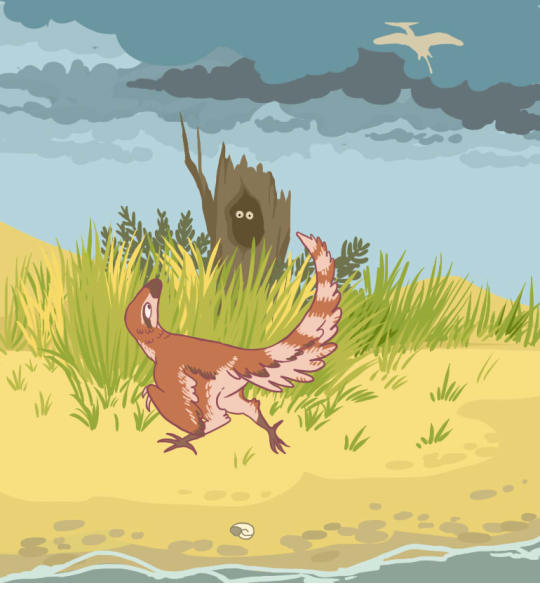

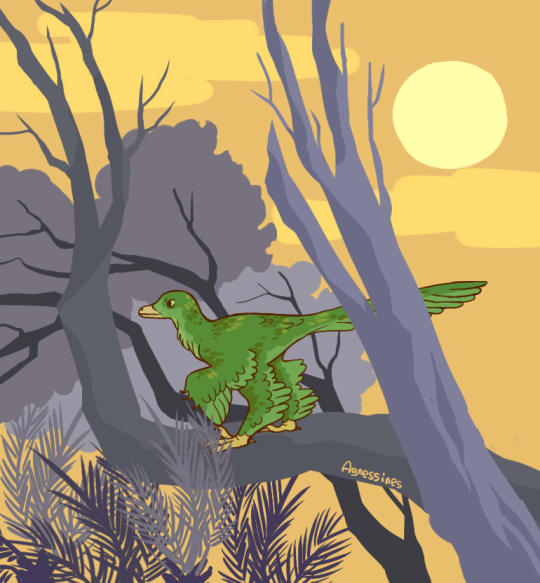
Dinosaurs with some artistic license - Loosely based on Sinosauropteryx, Microraptor and Pedopenna.
#paleoart#dinosaurs#microraptor#sinosauropteryx#pedopenna#theropod#dinosaurs are birds#paleontology#hire me to draw dinos#illustration
152 notes
·
View notes
Photo
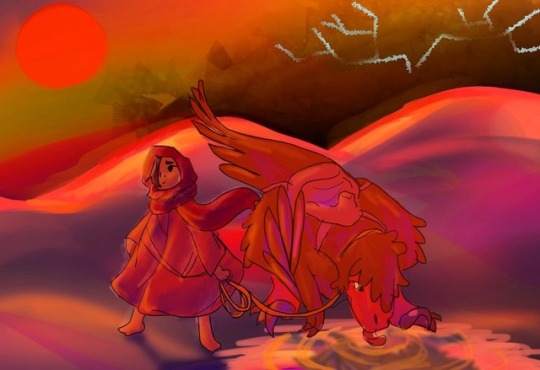



wbj #3: Who lives in your world?
above are some doodles i’ve done of kralle’s denizens. very, very broadly speaking, kralle’s sentient life is separated into two categories: birds and people. it’s a bit more complicated than that, but i’m going to split it into those two categories for the purposes of organization here.
people
humans colonized kralle accidentally via interplanetary portals, and they did so several times, in waves. the oldest of kralle’s people are the lowlander giants, who unsurprisingly settled in the hospitable frisian lowlands. they made their way to kralle extremely early in the evolutionary timeline of humanity, and as a result have splintered off into a different subspecies of human, notable specifically for their immense size. the third photo above depicts one. the lowlanders organize under a complex, clan-based social structures centered around a dominant male and his harem of females and subservient males. social mobility is relatively straightforward— a successful challenger to the clan leader usurps him. conflict between clans is relatively infrequent as most clans keep to their own territory.
next to colonize were the sifa people. once they arrived in kralle, they gravitated northward to sefia (the land after which they take their name). continuously fleeing the qahn (a massive, repetitive sandstorm that sweeps the desert predictably and cyclically), they transitioned into a nomadic, desert-wandering people. evidence suggests that the qahn’s path was once irregular, but since the institution of the sifa’s mysterious religion, it became constant. though some sifa eventually settled down at the desert’s fringes, those who maintained the nomadic caravan lifestyle became the walkers, ritualistic practitioners of arigation and keepers of the qahn’s cycle. a lone walker and her mount are pictured in the first image above.
the final two groups occurred in rapid succession, only a few millennia separating their arrivals in kralle. the first of these were the marshlander people, a small population of olive-skinned people who took up a simple, pastoral life on the eastern coast and marshy areas of daehrius. a fairly peaceable people, they’ve historically enjoyed trade with the sifa, and are proficient boatmakers, craftsman, and fishers. a marshlander is depicted in the second image above.
lastly, the derrish are a fair-skinned, militant, and strictly feudal people who have come to inhabit the mountainous reigions of daehrius. shortly after their arrival they established a strict racial hierarchy and subjugated the marshlanders to their east. they view the sifa to the north as inferior and have taken some as slaves, and the giants to the south as barbaric but too brutal to dominate. their noble houses swear fealty to the ageing king, whose derrish capital stands where a major marshlander city once did.
birds
kralle has a lot of the same birds as we do, but there are some major outliers worth noting. the first of these is the wisebirds, a species of colossal flying parrot endemic to the sagewood. their intelligence rivals that of humans, though their intelligence manifests in different ways— they are not exceedingly social, at least by human standards, for instance. they do have a loose social structure, however, and a vague understanding of morality and law. because the sagewood is so seldom explored, they have something of a legendary status among humans.
the bravebirds are really a category of technically unrelated but superficially similar birds, similar to the label “bird of prey.” they’re essentially extremely large versions of ordinary, familiar birds, with some supernatural properties. though the term “bravebird” can technically apply to any extraordinarily large and supernatural bird, in execution it’s often only used for birds of prey that meet these standards. bravebirds can still fly even when they grow to exceedingly large size due to the impossibly strong yet light substance their bones and feathers are made of. they are biologically immortal (though they can be killed) and eventually lose the power of flight as they grow to heavy, usually centuries into their lives. they often survive beyond this point, however, by extorting food from birds lower on the pecking order, which is dictated by size and nesting altitude. extremely old bravebirds more closely resemble dragons than birds— the traditional god figure of the marshlanders is an infinitely old bravebird.
lastly, the term “drake” is an umbrella term for the non-avian theropods of kralle (i.e. dinosaurs). these vary wildly from the spinosaur-esque swamp drakes to the microraptor-esque mountain drakes to the utahraptor-esque pack drakes, and so on forever.
that’s all! so succinct right! more to come tomorrow. :’D
3 notes
·
View notes
Text
wbh #12: What creatures inhabit your world?
birds! and birds, and birds, and birds. and birds. and birds some more.
kralle’s whole shtick is that, except for people, almost everything is some kind of bird. there’s already an unreal amount of variation in the bird family in our own world— in kralle this is only intensified. i couldn’t possibly go through it all, but i’ll outline some of the more developed species here.
mountain drakes

(Image by Zhao Chuang; courtesy of Peking Natural Science Organization)
mountain drakes are based heavily on microraptors. they’re quadruple-winged, with both their fore- and their hindlimbs serving as wings. their feathers are black with a bluish sheen and they have short, toothy snouts for catching insects. unlike microraptors, they are zygodactyls, i.e. they have H-shaped feet, like a macaw or a chameleon. their feet and palms are outfitted with primitive setae, which facilitate their climbing abilities and enable them to (with some difficulty) scale virtually sheer cliffs.
true to their name, the mountain drakes inhabit mountains and cliffs in the northern derrish mountain range, up through southern sefia. they feed on bugs and make their nests in the crags. their small size, keen intellect, and evasive nature gives them the place of the trickster in traditional mythology, and they’re thought to have lifespans exceeding several centuries or even millennia. their true lifespans are not known. mountain drakes are most definitely the cleverest of the drakes— they’ve been shown to exhibit basic tool use, have passed the mirror test, can mimic human speech, and are even rumored to be able to perform basic mathematical calculations.
sandfowl
sandfowl are very large members of the order galliformes. they somewhat resemble the wild turkey, though they’re a dull brown in coloration and notably larger, sometimes up to six feet long. they’re ground-dwellers endemic to the deserts of sefia, with extremely thick, padded feet and pointed beaks to aid in breaking apart their main food source, the cactus. like most animals that call the desert home, they’re a nomadic species, constantly fleeing the qahn. like the turkey they resemble, their large size makes them ideal targets for domestication, and the walkers have a long history of such with them. in fact, the sandfowl is instrumental to the walker religion— their blood is typically used to refill the blood shrines around the desert, thus making them a central part of the religious tradition.
wisebirds

the wisebirds are very large, very colorful, and very intelligent parrots endemic to the sagewood. their social structure has selected for increasingly extravagant colorations throughout the years, leading to the radiant wisebirds seen today. however, they still correspond to a naming scheme which describes the relatively simple colorations of their ancestors— for example, a valid wisebird name might be “tenec of the family of the red smattering of the verdant clan of the ancient order of the wise.” in general, the wisebirds are known for being very verbose, descriptive, and somewhat whimsical.
standing about five and a half feet tall, they resemble very large macaws, and retain the power of flight. they are capable of speech as well, not just through repetition but through the conscious construction of meaningful language— however, wisebirds speak their own language in addition to the languages of men, and their mother tongue sounds to the untrained listener like unremarkable squawking.
wisebird society is fairly loose, and broken into small, self-governing families. in civil matters, a council of venerable and wise elders is deferred to, but for the most part the wisebirds live very simple, very long lives. because they keep to themselves, they’ve achieved something of a legendary, pseudo-mythical status among men. according to legend, in fact, they are more intelligent than even the wisest people in human history.
0 notes